 After decades of preparing our garden beds with a traditional approach, we finally got smart and changed our ways. Here, I describe the method we have found most effective and efficient. The soil in my garden has been turned plenty of times, by me, my husband, and my mother and father before me. This is our soil, we are connected to it by years of toil. By the "sweat of our brow" we have worked this land. Wait a second, this sounds like way too much work! I think the year was 2004, I happened to pick up Lasagna Gardening by Pat Lanza, a book that changed my method of gardening from the "dig and dump" method to what I call the forest floor method.
After decades of preparing our garden beds with a traditional approach, we finally got smart and changed our ways. Here, I describe the method we have found most effective and efficient. The soil in my garden has been turned plenty of times, by me, my husband, and my mother and father before me. This is our soil, we are connected to it by years of toil. By the "sweat of our brow" we have worked this land. Wait a second, this sounds like way too much work! I think the year was 2004, I happened to pick up Lasagna Gardening by Pat Lanza, a book that changed my method of gardening from the "dig and dump" method to what I call the forest floor method.
If you think of the forest floor, it all becomes clear. Season after season, leaf litter and animal droppings layer a perfect mixture of carbon and nitrogen. Earthworms and millions of microorganisms come to the surface to feed and decompose the debris into nutrient rich soil. There's a whole micro-universe at work beneath our feet! Understanding this, made gardening a whole lot easier and many times more efficient. Now, we replicate nature as closely as we can and add all the contents to a raised box, barrel or bucket. After researching Ruth Stout, Mel Bartholomew  and others, we have combined what we have found works best for us. The number one, most important thing you can do, is to start a compost pile. Here are our compost bins. They aren't pretty but they are cheap and they do the job well. They are a nice height, easy to turn and the lids close to keep the neighborhood cats out. I like that they are black, so they heat up fast. They cost us five dollars, and were ordered from the city of Mesa. Phoenix also has recycled garbage cans that you can buy. We collect leaves, grass clippings, coffee grounds, shredded newspaper, add chicken manure, straw and vegetable scraps. Keep it a little damp and turn it every
and others, we have combined what we have found works best for us. The number one, most important thing you can do, is to start a compost pile. Here are our compost bins. They aren't pretty but they are cheap and they do the job well. They are a nice height, easy to turn and the lids close to keep the neighborhood cats out. I like that they are black, so they heat up fast. They cost us five dollars, and were ordered from the city of Mesa. Phoenix also has recycled garbage cans that you can buy. We collect leaves, grass clippings, coffee grounds, shredded newspaper, add chicken manure, straw and vegetable scraps. Keep it a little damp and turn it every  week or so.
week or so.
 and others, we have combined what we have found works best for us. The number one, most important thing you can do, is to start a compost pile. Here are our compost bins. They aren't pretty but they are cheap and they do the job well. They are a nice height, easy to turn and the lids close to keep the neighborhood cats out. I like that they are black, so they heat up fast. They cost us five dollars, and were ordered from the city of Mesa. Phoenix also has recycled garbage cans that you can buy. We collect leaves, grass clippings, coffee grounds, shredded newspaper, add chicken manure, straw and vegetable scraps. Keep it a little damp and turn it every
and others, we have combined what we have found works best for us. The number one, most important thing you can do, is to start a compost pile. Here are our compost bins. They aren't pretty but they are cheap and they do the job well. They are a nice height, easy to turn and the lids close to keep the neighborhood cats out. I like that they are black, so they heat up fast. They cost us five dollars, and were ordered from the city of Mesa. Phoenix also has recycled garbage cans that you can buy. We collect leaves, grass clippings, coffee grounds, shredded newspaper, add chicken manure, straw and vegetable scraps. Keep it a little damp and turn it every  week or so.
week or so.
Next, choose a sunny location and make sure you have a convenient water source (we use a drip system and also have flood irrigation). Then, make your box. We use untreated pine. Pine will not last forever, but it's cheap. Our boxes have lasted for five or six years with no problems so far. This box is 4ft x 8ft. and 12 inches deep.  After you place your garden box, make sure it's level. We leave approximately two feet between each box, just enough room for a lawn mower. Place six or seven layers of overlapped newspaper over the entire surface and halfway up the sides of the box. Here, we are trying burlap bags on the first layer to keep the gophers from invading our boxes.
After you place your garden box, make sure it's level. We leave approximately two feet between each box, just enough room for a lawn mower. Place six or seven layers of overlapped newspaper over the entire surface and halfway up the sides of the box. Here, we are trying burlap bags on the first layer to keep the gophers from invading our boxes.
 After you place your garden box, make sure it's level. We leave approximately two feet between each box, just enough room for a lawn mower. Place six or seven layers of overlapped newspaper over the entire surface and halfway up the sides of the box. Here, we are trying burlap bags on the first layer to keep the gophers from invading our boxes.
After you place your garden box, make sure it's level. We leave approximately two feet between each box, just enough room for a lawn mower. Place six or seven layers of overlapped newspaper over the entire surface and halfway up the sides of the box. Here, we are trying burlap bags on the first layer to keep the gophers from invading our boxes.
Next, we add a layer of aged steer manure. Manure is a high nitrogen source and will generate heat to help kill weed seeds and disease pathogens.  The main ingredient in our beds is our own compost. Remember, compost contains decomposed leaves, grass clippings, straw, shredded newspaper, coffee grounds and chicken manure that have been broken down and are filled with microorganisms that further the decomposition process while in the raised bed. This is the "black gold" you hear gardeners talking about. Make sure your compost is near the garden beds. It makes transporting that pot of gold so much easier.
The main ingredient in our beds is our own compost. Remember, compost contains decomposed leaves, grass clippings, straw, shredded newspaper, coffee grounds and chicken manure that have been broken down and are filled with microorganisms that further the decomposition process while in the raised bed. This is the "black gold" you hear gardeners talking about. Make sure your compost is near the garden beds. It makes transporting that pot of gold so much easier. 
 We also add a few bags of amended soil. This Kellogg product contains bat guano, kelp meal and worm castings. We also add a good potting soil mix that contains vermiculite in the ingredients. This helps to retain moisture and improves drainage and aeration.
We also add a few bags of amended soil. This Kellogg product contains bat guano, kelp meal and worm castings. We also add a good potting soil mix that contains vermiculite in the ingredients. This helps to retain moisture and improves drainage and aeration.
 The main ingredient in our beds is our own compost. Remember, compost contains decomposed leaves, grass clippings, straw, shredded newspaper, coffee grounds and chicken manure that have been broken down and are filled with microorganisms that further the decomposition process while in the raised bed. This is the "black gold" you hear gardeners talking about. Make sure your compost is near the garden beds. It makes transporting that pot of gold so much easier.
The main ingredient in our beds is our own compost. Remember, compost contains decomposed leaves, grass clippings, straw, shredded newspaper, coffee grounds and chicken manure that have been broken down and are filled with microorganisms that further the decomposition process while in the raised bed. This is the "black gold" you hear gardeners talking about. Make sure your compost is near the garden beds. It makes transporting that pot of gold so much easier. 
 We also add a few bags of amended soil. This Kellogg product contains bat guano, kelp meal and worm castings. We also add a good potting soil mix that contains vermiculite in the ingredients. This helps to retain moisture and improves drainage and aeration.
We also add a few bags of amended soil. This Kellogg product contains bat guano, kelp meal and worm castings. We also add a good potting soil mix that contains vermiculite in the ingredients. This helps to retain moisture and improves drainage and aeration.
Continue to layer and mix lightly until the box is filled to a couple of inches from the top. The box is ready to plant! When you plant in this soil your seeds or transplants are immediately surrounded by rich nutrients.





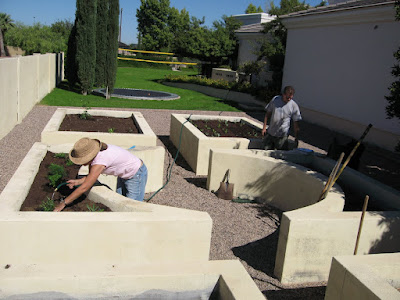























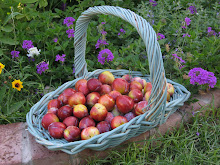
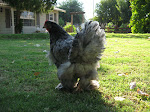
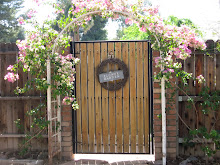


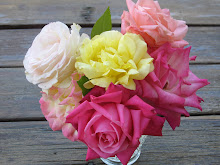

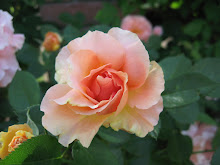




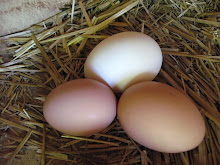

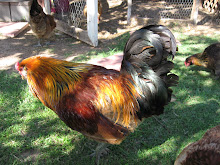
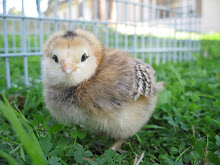
.jpg)









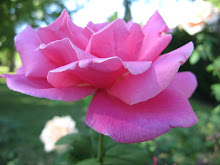
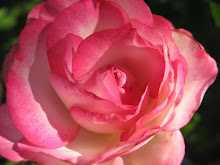
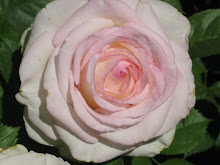
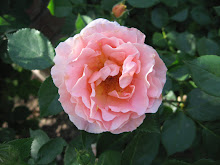
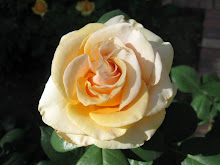
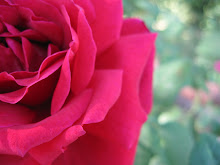


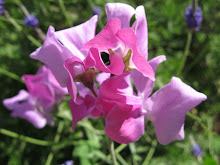

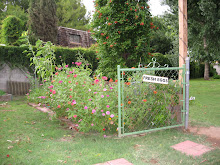

6 comments:
Wow! What an awesome awesome post!!! I would really like to try this on a small scale, since I don't really know what I"m doing yet when it comes to vegetable gardening.:) My middle son asked if we could start one this year but I've only ever grown flowers. He's 11 and I think it would be a wonderful experience, even just to do one box. Thank you so much for all the wonderful details.
Thankyou Roni, raised beds are a perfect way to start a small garden. We started with a 4'x4' box and just kept adding more. Just have a plan for where you'd like to add more boxes in the future. It's amazing how addicted you can become!
Hi Mrs. Green! Rory, Dia and I are so disappointed we didn't get to chat at Nikki and Steve's wedding, but we think of you often as we enjoy your fabulous eggs! :) (We went out for breakfast last week and asked each other what was wrong with our omelets....finally realized, it's because they didn't use your eggs, lol. You have spoiled us for the better!)
As far as the raised beds go, can you put them over any kind of ground? We have rock currently in the area where we'd like to garden. Would it be okay to move the rock and just set up "camp" there? Or do we need better earth beneath the boxes? We have been desperate to garden forever and have started many a compost pile, but it's never "stuck." Thinking (hoping!) this style might actually work...
Hi Stephanie, so nice to hear form you! I am happy to hear you are enjoying our eggs. Yes,you can just put a box on top of the rocks. Maybe, just rake them out if they are really thick. As long as you have good drainage it will work. Let me know how it goes. You are welcome to come by and check our garden out too.
Love this post! We finally finished making our beds a couple months ago and are anxiously awaiting our first kitchen garden this year! I will bookmark this post to refer to. Thanks!!
We are just planning our garden box. We are about a mile from the ocean in Southern California. The soil here has a lot of clay. Do we need to do anything with the soil to prep it for the garden box going on top of it?
Thanks ...
Post a Comment